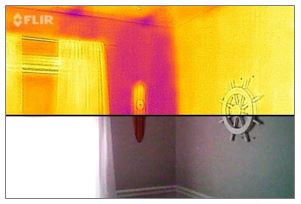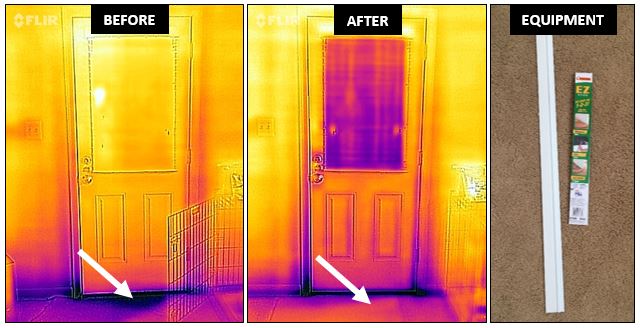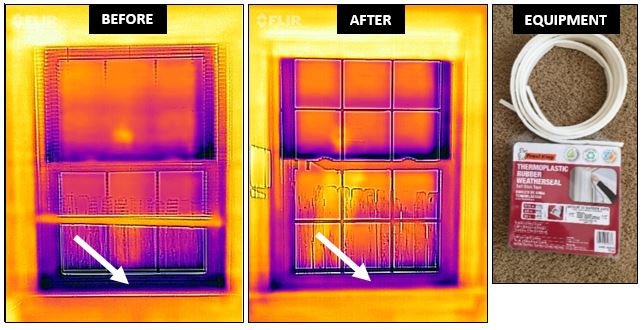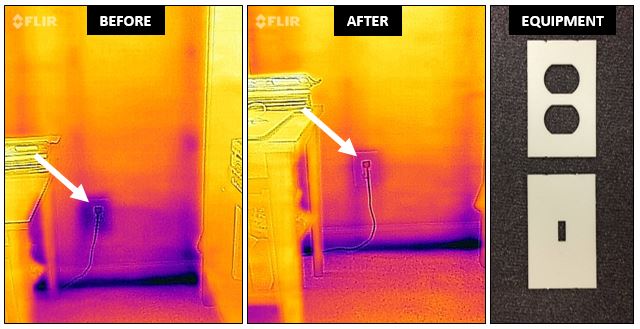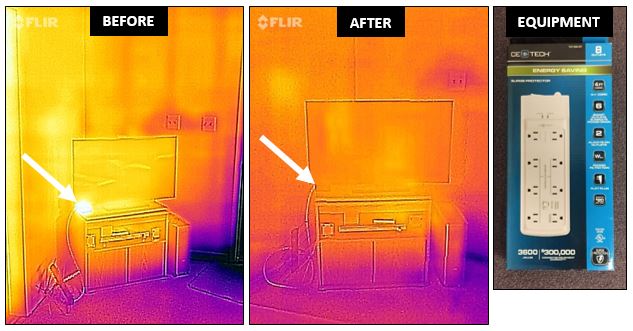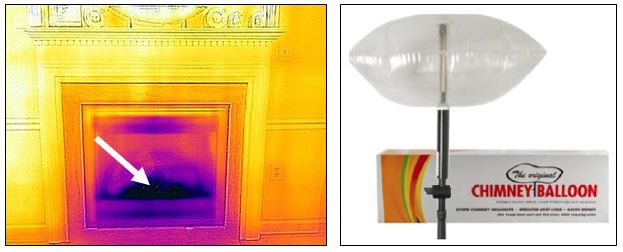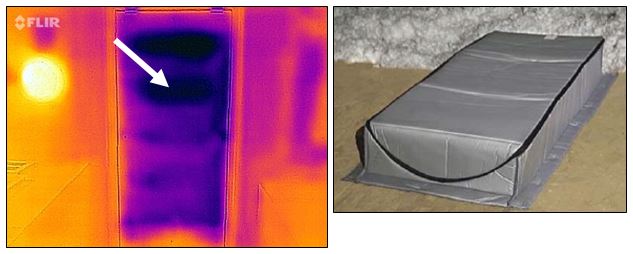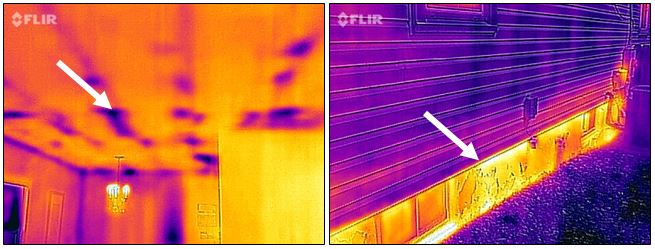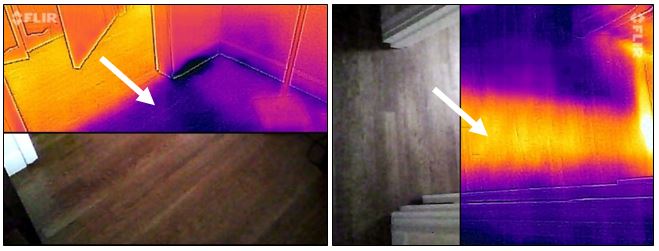Fairfax County residents can reserve thermal imaging cameras from any branch of the Fairfax County Public Library. Reserve a camera just like a book through the library catalog and it will be shipped to your local library branch for pick-up.
These cameras are available for Fairfax County residents to inspect their home or business for hot and cold spots, which often indicate energy saving opportunities. By implementing some of the weatherization improvements indicated below, residents can make their home a more comfortable place to live while reducing utility bills. ENERGY STAR estimates that air sealing and insulation improvements can cut heating and cooling costs by 17% for homes in our area.
OPERATING THE THERMAL CAMERA
Thermal imaging cameras use color to show the relative temperature of objects: cold is purple, moderate is red and hot is yellow. In the winter, purple spots inside your home indicate a lack of air sealing or insulation. In the summer, these spots would appear yellow instead. The camera takes thermal and regular pictures simultaneously, so you can compare what is visible to you with the thermal images.
In this image, both walls look the same to the naked eye, but the thermal camera reveals that the exterior wall on the left is colder. All of the images on this page were taken in winter, when the goal is to reduce or eliminate purple areas inside the home.
ENERGY SAVING OPPORTUNITIES
To best identify energy saving opportunities there should be at least a 20-degree temperature differential between the inside of your home and the air outside. If possible, use the camera in the morning before your home has the chance to warm up from the sun.
Common culprits for air leaks include doors, windows, exterior outlets, ducts and connections to the outside such as cables or plumbing fixtures. Areas that might need additional insulation include attics, walls, floors, foundations, crawl spaces and ducts. Older homes that have not been well maintained can usually benefit the most from air sealing and adding insulation. Air leaks and insulation gaps are also often created during renovations, when contractors are drilling holes or moving insulation around.
Examples of small, medium and large-scale projects are provided below, but every home and every homeowner is different. Whether you prefer to hire a contractor or to do the work yourself, all of the projects below can save you both energy and money. More information for do-it-yourselfers can be found on the ENERGY STAR website. If you aren't sure what your results mean, consider hiring a professional to conduct a home energy assessment.


